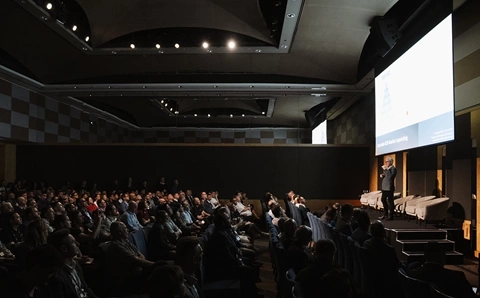As cyber threats evolve, regulations tighten, and AI adoption accelerates, one thing is clear: resilience is now the true measure of cybersecurity maturity.
Across ANZ, there’s growing pressure for businesses to align with frameworks like the Essential Eight, ISO 27001, and NIST. Yet for many MSPs, frameworks remain complex, fragmented, and disconnected from day-to-day operations.
At Synnex, we see this challenge every day. Many partners are grappling with how to translate frameworks into measurable outcomes that protect their customers and strengthen long-term business value. This gap: between understanding frameworks and operationalising them is where the true opportunity lies.
During our recent webinar, Raising the Bar: Building Cyber Resilience Through Framework Alignment, industry experts shared a common message: frameworks only work when applied with clear goals and measurable outcomes.
The real advantage comes when frameworks become a shared language of trust between vendors, MSPs, and customers ensuring everyone is aligned on risk, responsibility, and resilience. When frameworks are well-implemented, they not only enhance protection but also build confidence in a business’s ability to manage and mitigate risk, reassuring customers, vendors, and regulators alike.
Across ANZ, the cybersecurity and resilience market are now worth over $109 billion, growing roughly 8% annually according to data shared by Mark Illes from Omdia during the webinar. Yet, nearly 75% of SMBs have yet to implement any formal security framework or engage a managed security provider. That represents both a risk and an enormous opportunity.
For many SMBs and MSPs, the challenge isn’t willingness, it’s knowing where to start. Frameworks overlap, language differs, and few teams have in-house expertise to interpret them effectively.
This is where Synnex and our vendor ecosystem play a critical role. Through our Cloud services and Security and Compliance partners, we help partners to co-pilot the resilience journey, educating teams through webinars and hands-on enablement, and helping partners leverage frameworks to strengthen sales conversations and customer trust.
As Edmond Ng, Business Manager for Microsoft CSP at Synnex, explains, one of the biggest barriers isn’t technical, it’s commercial. “A successful framework implementation takes time and skill,” he says. “MSPs often struggle to turn that effort into a profitable offer that customers are willing to pay for. It requires building a new value proposition and upselling existing customers.”
Ng adds that success depends on having a strong ecosystem partner, “Our multi-vendor cloud-based security solution is accessible to partners in a predictable and affordable way. With the guidance of our presales, support, and professional services, partners can transition from transactional to becoming trusted, security advisors enabling partners to deliver the business outcomes they’ve envisioned and agreed upon with their customers.”
Head of Cloud at Synnex, Kuo Yoong agrees, noting that the biggest gap he sees is execution. “Frameworks often sit in policy documents rather than being embedded into everyday processes, like MFA, patching cadence, or data governance,” he says. “Once partners start treating frameworks as part of daily practice, they move from reactive compliance to proactive resilience, creating measurable business outcomes in the process.”
Yoong adds, “That’s the difference between being audit-ready and being attack-ready.”
When supported by automation, analytics, and governance tools, partners can turn compliance from a checkbox exercise into a genuine business advantage.”
Looking ahead to 2026, both Ng and Yoong agree that the next wave of MSP evolution, what many call “MSP 3.0” will depend on how quickly partners can adapt their capabilities and mindset.
Ng’s advice is simple: “Invest in the know-how. Customers today expect their partners to be competent in security. They’re more informed and aware of the risks than ever before. Invest now, learn fast, and fine-tune as you go, so your business can meet and exceed the market’s expectations.”
“Choose one framework and align it across your core offerings first,” says Yoong. “From there, layer automation, AI, and analytics. Frameworks aren’t red tape; they’re roadmaps that help partners build customer trust and long-term value. The MSPs who recognise that will lead the next generation of managed services.”
Cyber resilience isn’t a one-time project, it’s a discipline. The most successful partners are those who embed it into every service, process, and customer conversation.
At Synnex, we’ll continue to invest in resources and training that empower partners to build resilience that lasts, because the strongest competitive edge in 2026 and beyond isn’t just compliance. It’s trust.
For MSPs seeking guidance on aligning to frameworks and operationalising resilience, Synnex provides the tools, vendor network, and expertise to turn intent into impact. Contact our team at cloud@au.synnex-grp.com to start the conversation.
Explore our cloud and security solutions: https://partner.synnex.com.au/cloud-solutions/

.jpg&w=480&c=0&s=1)






.jpg&h=142&w=230&c=1&s=1)




.jpg&w=100&c=1&s=0)







.jpg&q=95&h=298&w=480&c=1&s=1)



